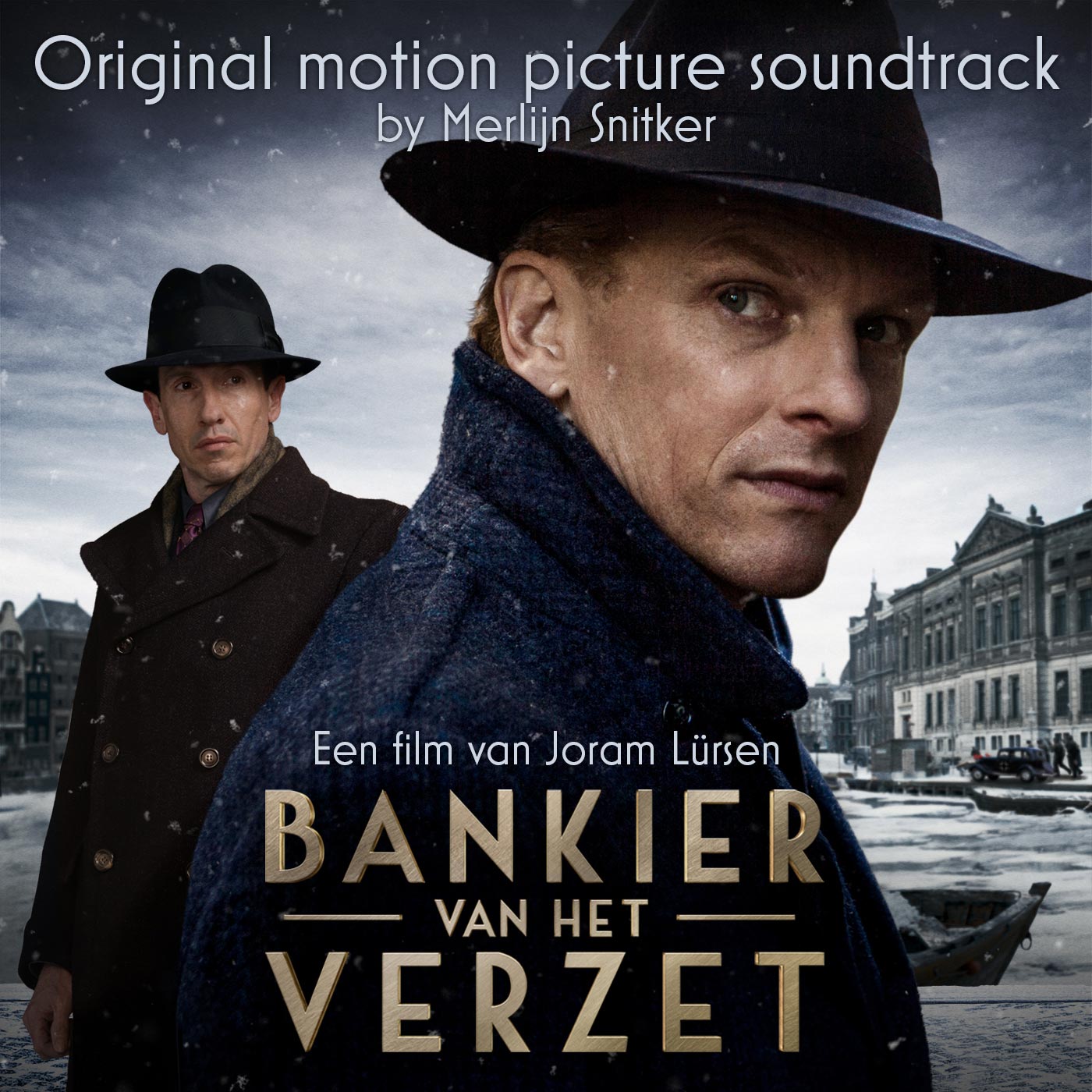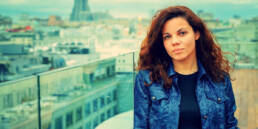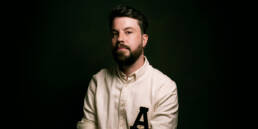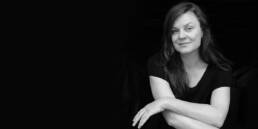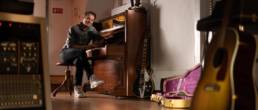
Merlijn Snitker is one of the most successful film score composers in the Netherlands. A multifaceted artist, he approaches every scoring project from a conceptual point of view, extracting subtle elements from the story, which he then reshapes and translates into beautiful musical metaphors and gripping soundscapes. It’s a technique that seems to be working well for Snitker, as in recent years he’s been knocking all sorts of interesting projects out of the park, including the acclaimed feature ’The Resistance Banker’, and the mystery series ‘De 12 van Schouwendam’ (‘The Schouwendam 12’), the latter winning him the Buma Award for Best Original Composition in a Television Series.
When did you first acknowledge the importance of sound and music in media?
Regarding the importance of music, it must have been when I was around sixteen years old and I got intrigued by the music from ‘Ascenseur pour l’échafaud’ composed by Miles Davis. At that time, I was studying saxophone and my father told me about the movie and I thought the music was so incredibly good and worked so well with the images.
From an early age, I’ve always been surrounded by music. Thanks to my mother, who is a professional violoncello player, I heard a lot of classical music. Thanks to my father, who was a huge jazz lover, I got to hear a lot of jazz music as well.
Regarding sound, I think I was fourteen or fifteen years old when I ended up at the movie ‘Monty Python and the Holy Grail’, unplanned and accidentally because the movie my friend and I had planned to see was sold out. There was this one particular scene in which I heard these galloping sounds from horses arriving but instead of horses, all the actors appeared in the frame with these coconuts, imitating the galloping sounds. I remember thinking ‘What the fuck is this?’ It was so absurd and funny. To me, that was really an important moment, as I realized what sound can do. And so this moment of serendipity, ending up at an unplanned movie, perhaps got me where I am today.
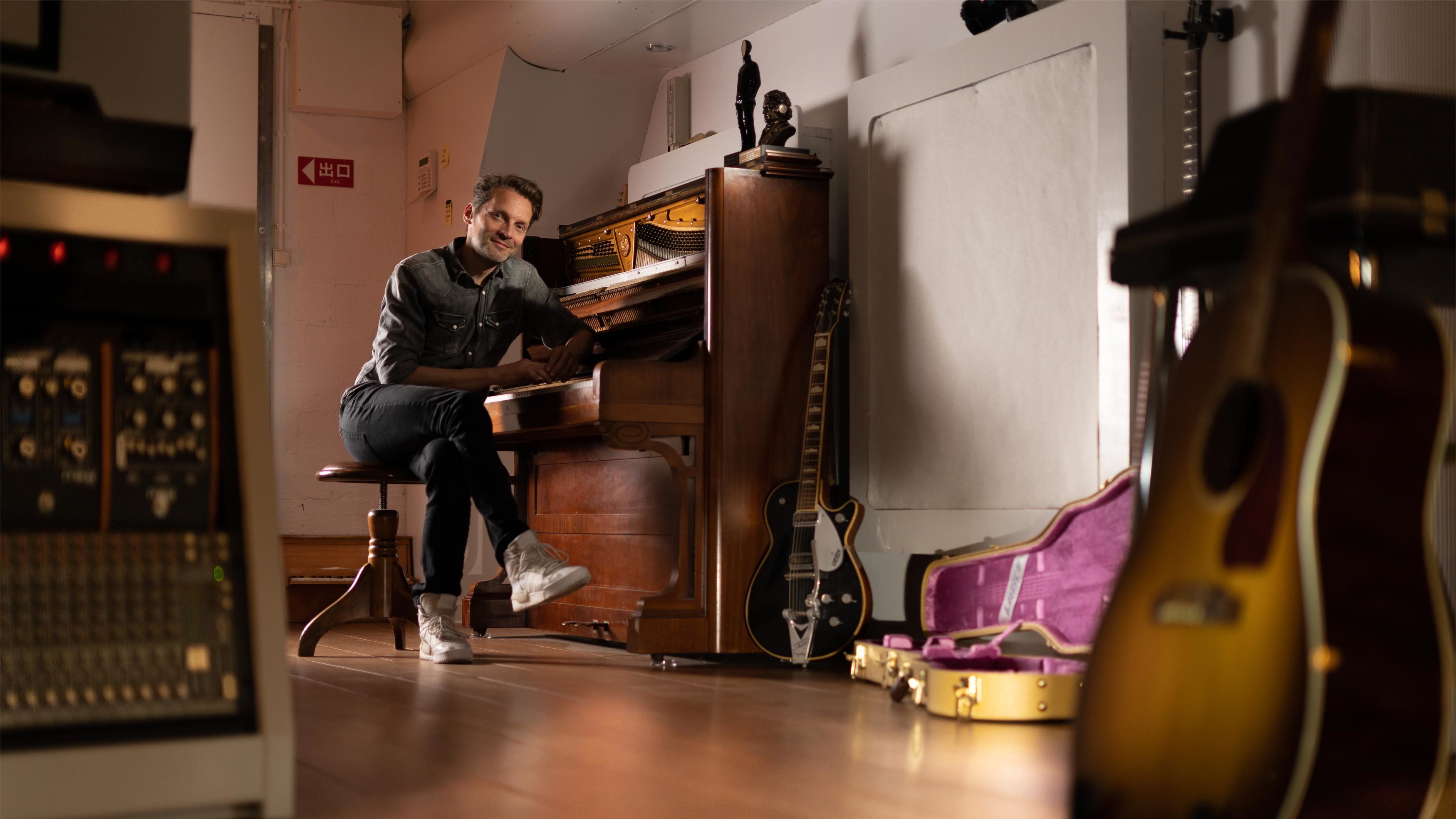 MERLIJN SNITKER. PHOTO BY ROGIER GERRITSEN
MERLIJN SNITKER. PHOTO BY ROGIER GERRITSEN
You recently worked on ‘De 12 van Schouwendam’ (‘The Schouwendam 12’), for which you won the Buma Award for Best Original Composition in a Television Series. What led you to create such an eerie and unsettling soundscape?
Before shooting, the showrunner, Lex Passchier, told me that he really liked what I had done with the previous series [‘De 12 van Oldenheim’]. In that series, in every episode, someone mysteriously disappears and dies. Because of that, I thought it might be good to do something with a disappearing sound and with harmonies that rise but don’t resolve so that there’s no ending to the harmony or melody – it’s open, it just disappears. He really liked that approach. For the new series he said to me, ‘I have two words for you: “water” and “underground”. Can you do something with those two words in the music?’
Besides this, Anne van der Linden, one of the two directors whom I had also worked with on the previous series, asked me to think of cinematic landscapes in the music, to look for musical textures and soundscapes and not use too much melody.
So I went to my studio and started experimenting with water. I had a bowl of water and took the water out with a spoon and let it drip. I then recorded all those water drips and did a lot of processing on them with long, eerie, endless reverbs. I put those drips in the title music and sculpted the reverb soundscapes under certain scenes.
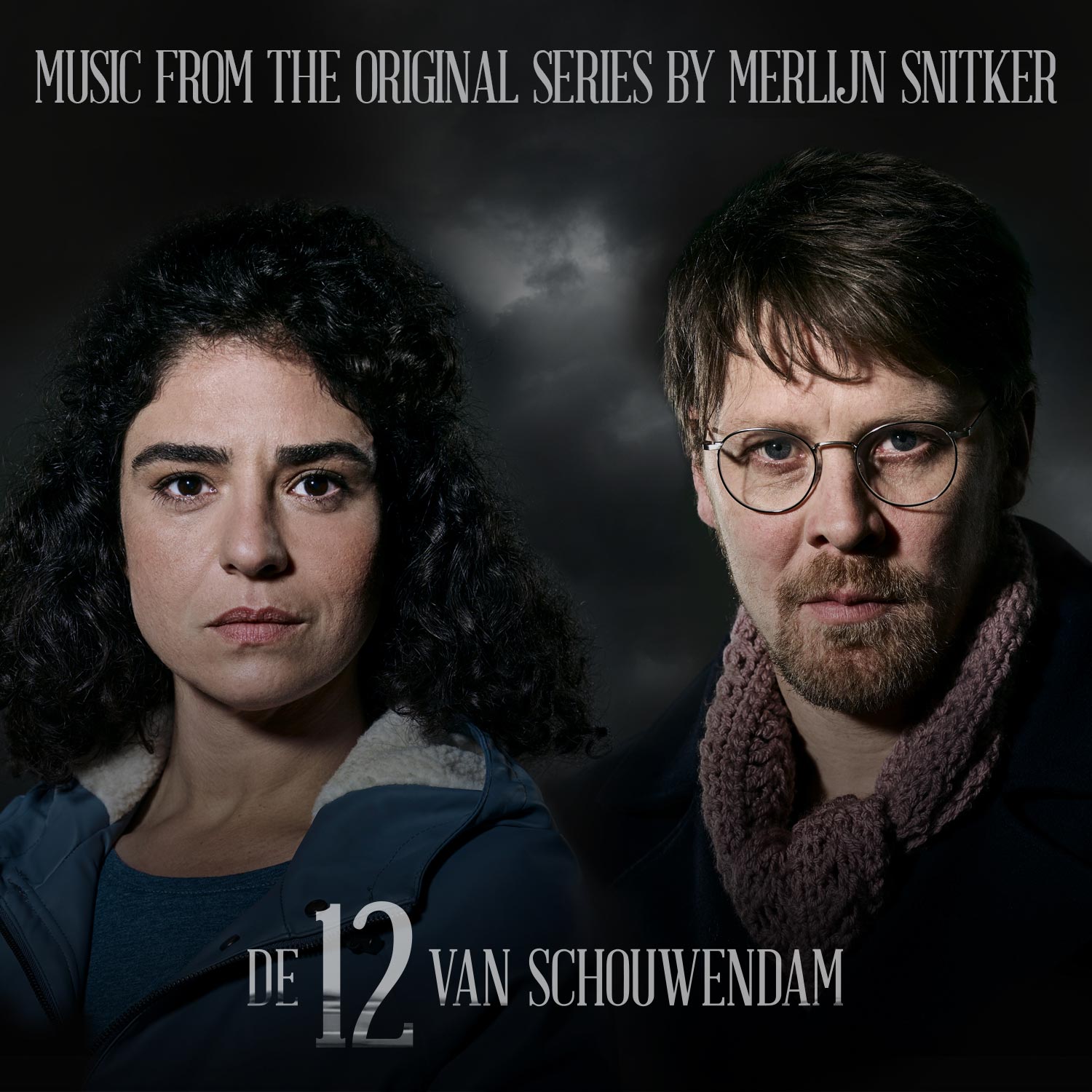
The other word, underground, refers to an underground tunnel system in the story. That brought me to this weird instrument that I have, a ‘Resonant Garden’ made by Folktek. It’s a wooden box, which has on the outside a bunch of short guitar strings and inside there’s a contact mic and also some effects like reverb and delay. If you just touch or knock the box, it can give you a certain rhythm. But you can also play the strings with a bow, which results in a very dark, intriguing, underground kind of soundscape. It’s an acoustic electronic instrument, with an organic approach to sculpting sound and textures. I have composed most of the rhythm and soundscapes in the series’ music on this weird instrument, so it plays an important role in the score.
Regarding my specific approach, I had a talk with the other director, André van Duren. We both had just seen the movie ‘The Favourite’, directed by Yorgos Lanthimos. In this film there’s this rhythmic theme [‘Didascalies’, composed by Luc Ferrari] where there’s hardly any melody, there’s just this one short note played on a viola and it’s repeating itself over and over. And I thought, ‘WOW, it’s so bold that they chose this type of music as one of the leitmotifs in that movie.’ André had exactly the same feeling and said, ‘We have to look for something like that.’ So in the title music of ‘De 12 van Schouwendam’ there’s also a repetitive tone on the piano, but in a different way, of course, accompanied with the water drips, the weird wooden box and a violin melody.
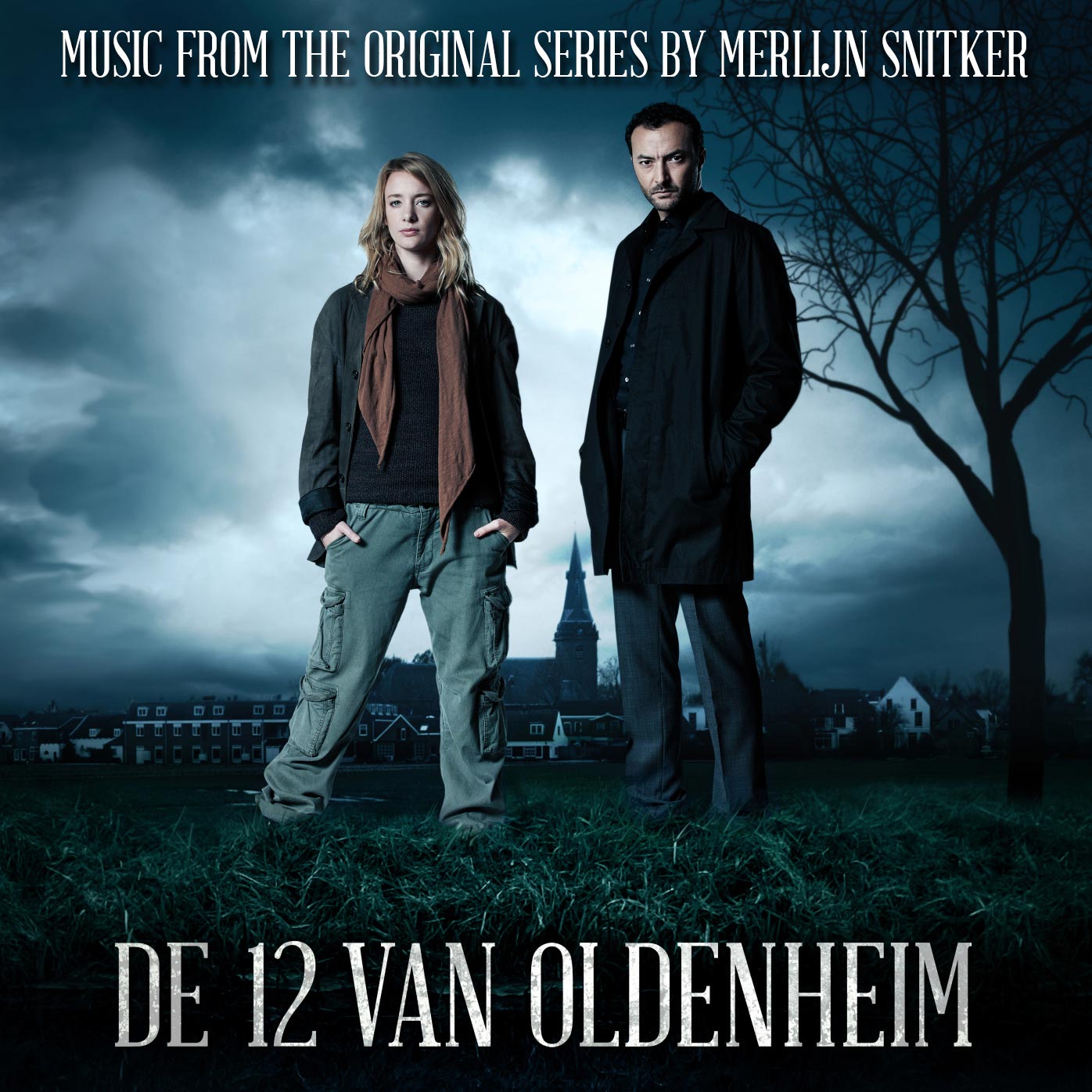
There’s virtually no connection between the two series, except for the recurring theme of uncertainty around the disappearance of a few community members. How did you connect the two series musically?
Well, story-wise both series have a strong whodunit theme. In the new series, the audience doesn’t know for 10 episodes whether the main character is the one he says or thinks he is.
For me, as a composer, the biggest challenge was to bring the audience close to the mystery of the main character and meanwhile suspect or not suspect other characters.
Besides the whodunit theme, the new series was totally different from the first season. So to be honest, musically I didn’t connect the two series all that much, only a few themes from the previous series are coming back in this new series, but I rearranged them. They did ask me to reuse some themes but I wanted to challenge myself and see if we could find something new for ‘The Schouwendam 12’, as I described with the two words ‘water’ and ‘underground’. So I actually composed and sculpted a lot of new material for this new season.
As for the instrumentation, in the first season I’ve written most of the themes for guitar and cello, in the new series the main instruments that I’ve used are the ‘Resonant Garden’, synthesizers and a Wurlitzer. All the stuff that’s more theme or melody-based was played on the Wurlitzer or the violin.
‘De 12 van Oldenheim’ (‘The Oldenheim 12’) was your first collaboration with Anne van der Linden and Lex Passchier. How did this come about?
In 2013, I composed the music for a feature called ‘Bloedlink’ (‘Reckless’). It’s a remake of an English film, called ‘The Disappearance of Alice Creed’. The music for ‘Reckless’ is also kind of texture-based, with a lot of suspense, a lot of darkness and that score caught Lex’s attention. He asked me, ‘are you interested to come over to the office to talk about our new project?’. And this resulted in my first collaboration with the makers.
For ‘The Resistance Banker’, you’ve written a well-rounded, 360-degree score, that covers all the themes and emotions present in the film – courage, hope, sadness, family, etc. Can you tell me more about your approach to scoring this feature?
There is this sort of ‘work – marriage’ between the director, Joram Lürsen, the editor, Peter Alderliesten, and me. There’s a lot of trust in this relationship because by now, we have made quite some movies together.
At the start of a new project and before any actual shooting has been done, the three of us always go for a coffee and sit together. I will bring my iPhone, connect three headphones to it and we will sit in this coffee corner and listen to music. Sometimes, I have already composed something based on the script, sometimes I just put on reference music. And then we’ll be discussing what it is that we’re looking for and what the music should do.
Joram told me that this story is kind of an adventure of grown up young boys, but on the other hand it’s also a WW2 disaster drama. And then there’s also the heist, in fact this storyline is about the greatest bank robbery in the history of the Netherlands. [The film is based on a true story]. He told me that those three elements are really important in the story and that they had to be reflected in the music.
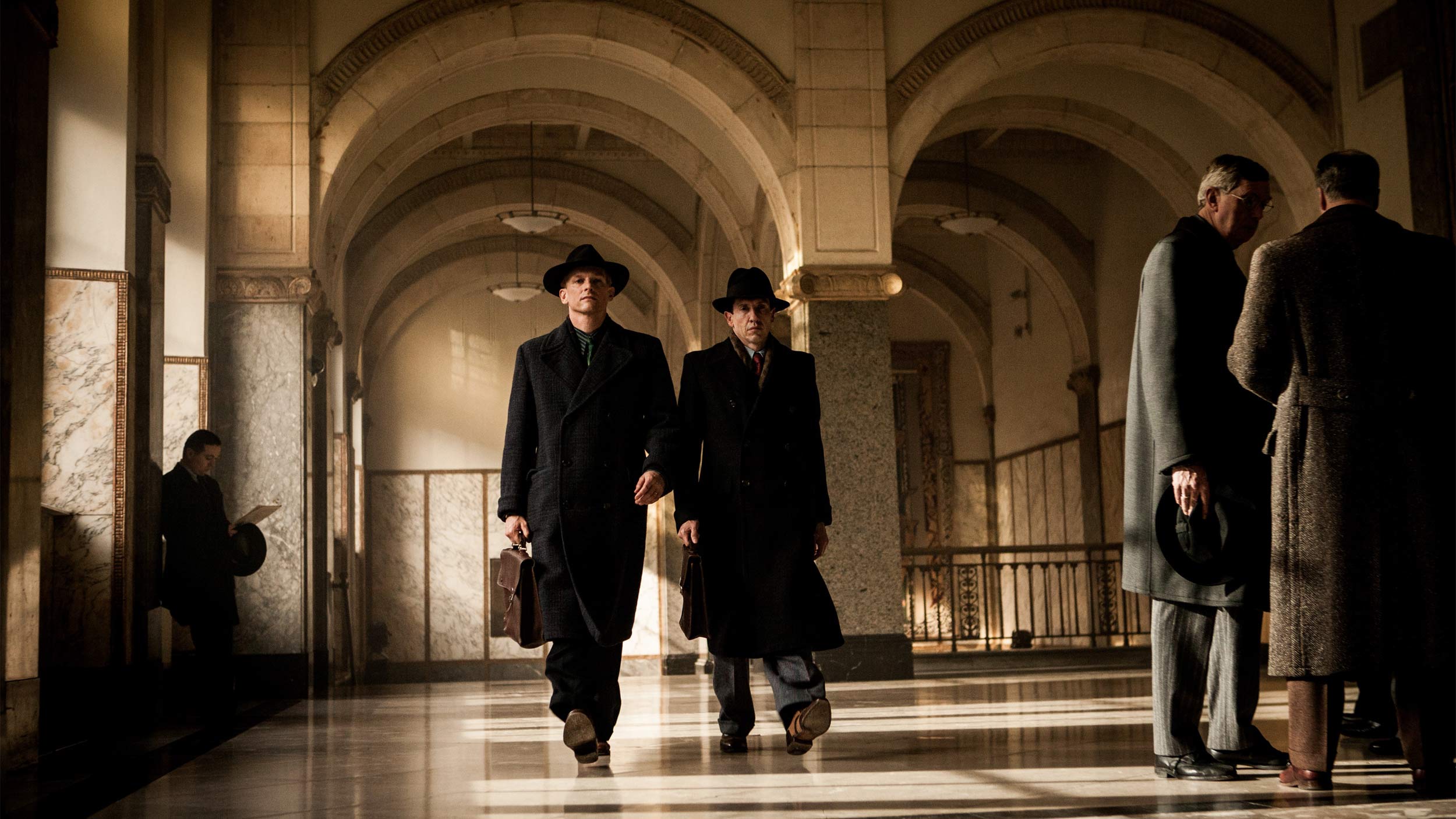 BARRY ATSMA AND JACOB DERWIG IN ‘THE RESISTANCE BANKER’. © NL FILM EN TV 2017 / MARK VAN ALLER
BARRY ATSMA AND JACOB DERWIG IN ‘THE RESISTANCE BANKER’. © NL FILM EN TV 2017 / MARK VAN ALLER
The story is about Walraven van Hall and his brother Gijs, two Amsterdam-based bankers who set up a secret underground bank to fund the Dutch resistance. The two brothers and their allies have all these secret meetings during which they make their plans. Upon entering a meeting, they must use a rhythmic ‘knock on the door code’. If the person on the other side of the door hears this code and it’s the correct code, one can enter and join the meeting.
Later on in the story, betrayal also plays a role during these meetings, with dramatic consequences, hence I wanted to use the ‘knock on the door code’ as a rhythmic leitmotif for a part of the score. The first time the rhythmic leitmotif appears is at the beginning of the movie when the main character’s brother is brought into the bank to be interrogated. The music starts with these big accents and the knocking code is hidden in those accents. After that, it keeps coming back as a rhythmic base for the scenes with suspense.
Then we have the heist element in the movie for which I composed, based on the script, a jazz theme. For this theme, I started with some historical research. I encountered that during that time, in Amsterdam there was the Kultuurkamer, which was an organization that controls all the cultural activity. If you had a performance with a band, it was under strict rules coming from the Kultuurkamer. For instance, you were not allowed to play jazz and you were not allowed to mute your trumpet or play drum solos, because it referred to black American music. So I came up with the idea that for the heist there had to be some kind of rhythmic jazz music in the score which stands for the resistance being reflected in the music.
“When your music serves the story and communicates with the audience, it’s the best thing that can happen to you as a composer, because you make the movies for them.”
The third major subject for the music was the drama of the main character, Walraven van Hall [Barry Atsma]. Throughout most of the story, there isn’t much weakness in this character. He’s kind of fearless and not afraid to work on this very risky underground operation. The vulnerable side of Walraven is a bit underexposed in the story, so we discussed that the music should play a role in highlighting that.
With this in mind, I composed two themes: one family theme (‘Family van Hall’), from the perspective of him being afraid of losing his children and wife and which reflects the emotional side of the main character; and one theme that stands for brotherhood, reflecting the relationship with his older brother Gijs who always wanted to protect his younger brother ever since their childhood. That theme (‘Epilogue The Resistance Banker’) is one of the main themes of the movie.
A very nice outcome is that I made the music two years ago but even nowadays, on a regular basis, I get emails from people all over the world who ask for the sheet music so they play the themes by themselves. Especially the main piano theme, ‘We Moeten Onderduiken’ (‘We Have To Go Into Hiding’). In the end, as a composer, you’re giving your utmost best for the movie and then it’s really rewarding to get all these positive reactions from the audience who are moved by the story. When your music serves the story and communicates with the audience it’s the best thing that can happen to you as a composer, because you make the movies for them.
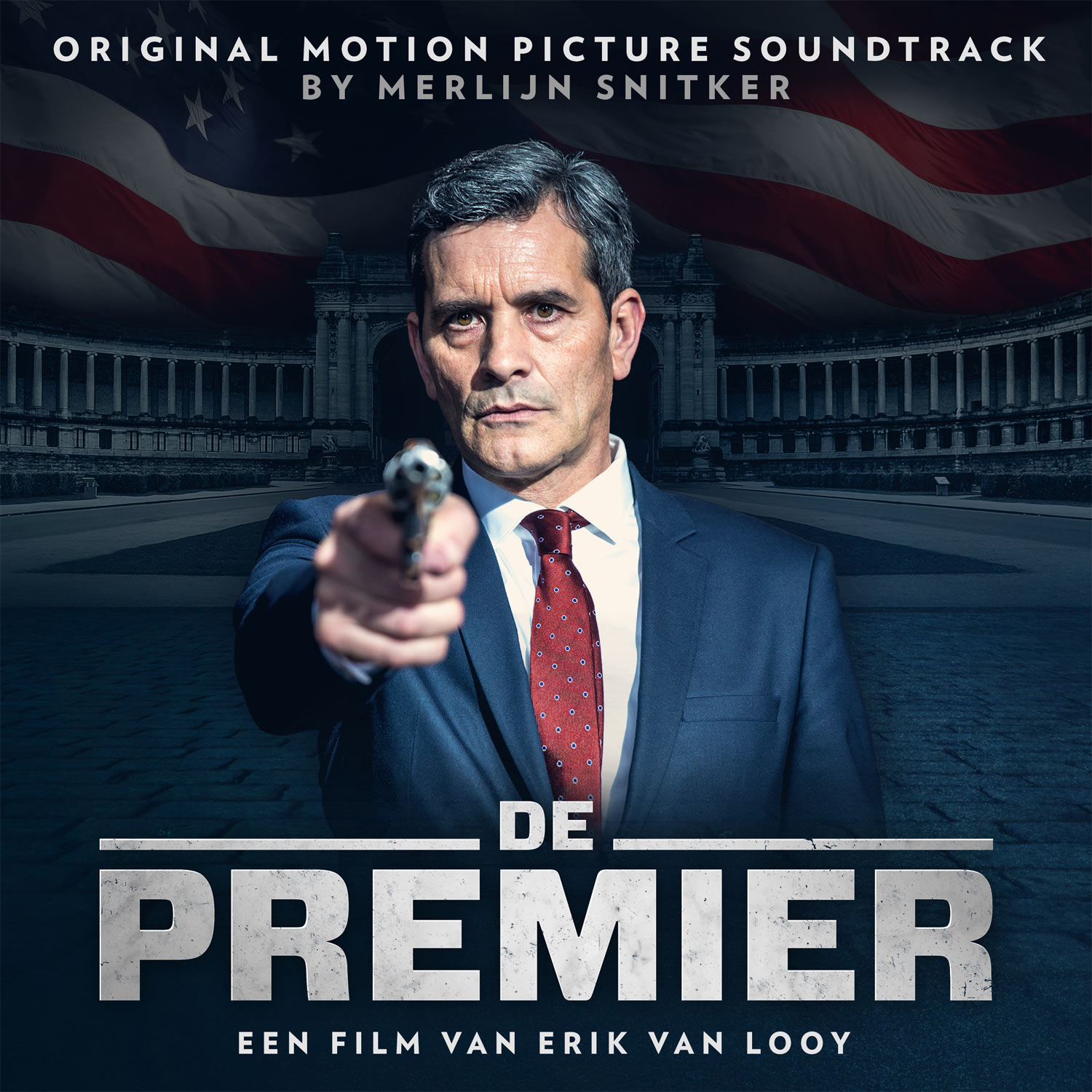
At what stage of a project’s creation do you start working on the music?
In post-production, I think editing is the most interesting process in filmmaking. There the story gets its final appearance. The editing is a search for how a story can be told in the best way. For me as a composer, it’s challenging to make the composition process a part of that search. So I prefer to start during editing.
Most of the time, I have to say, I start composing without picture. I just start looking for the main themes which we need for the movie or series. And then, if it works on an emotional level, we can see if it fits to picture. But if it fits the story, most of the time it fits the picture.
You’re quite a versatile composer and compose for various genres. But what’s your favourite?
That’s hard to say but there’s a tendency that I’m being asked to write for the darker side of score types, big drama movies. And I have to admit, I do feel at home when I can enter this darker side of the music with some kind of melancholy.
‘The Prime Minister’, for instance, is a thriller-drama about the prime minister of Belgium. He is being kidnapped on the day he is meeting with the president of the United States, who is a woman, and is being forced to assassinate her. This kind of stories always give me so many ingredients to write music, and specifically, in that movie, there was a lot of room for this darker musical side with a melancholy twist.
One of my ambitions is to compose more for bigger, international, European movies with an artistic challenge in the music. Working with directors from other countries brings in other interesting possibilities and opens up my musical horizon.

For instance, I composed for this Swedish movie called ‘Siv Sleeps Astray’, where the two directors, Catti Edfeldt and Lena Hanno, asked me to bring the Hang into the score, which is sort of a mystical rhythm-based instrument, and combine it with Joik singing. Joik is a certain type of singing by nomads in the Northern part of Finland and Sweden. I had never done that before and it was so challenging and inspiring to be on this musically unexplored territory.
What was the most challenging project you have worked on so far?
Maybe it’s a cliché, but every project brings in a new challenge. But if I have to pick one it would be ‘The Resistance Banker’ – I’m really proud of that one. That story gave so many possibilities for the different themes and different kinds of emotions that the director was looking for. That film was really challenging and involved a lot of hard work. I think for five or six months I declined all other offers because I wanted to have a total focus on this movie. It really paid off, as we received all those good reactions, not only on the movie but also on the music.
What projects do you have coming out?
I have just finished a very ambitious Dutch TV series, ‘Turbulent Skies’. It’s about the KLM, the biggest and the oldest aviation company that still operates under its original name. KLM has invented the whole concept of flying people from A to B with an aeroplane. At that time, it was a completely new thing so the two main characters in this story are real pioneers. Besides the adventure, there is also a lot of drama in the series. The story is set in the interwar period but for the music, we decided to stay away from period music. Think of electric guitar, harp, drums, blues and of course, the instrument we talked about before, the ‘Folktek Resonant Garden’!
It’s coming out at the end of the year and I’m very curious how the series will be received. Hopefully, the series will also get picked up internationally, for sure I think it has that potential.
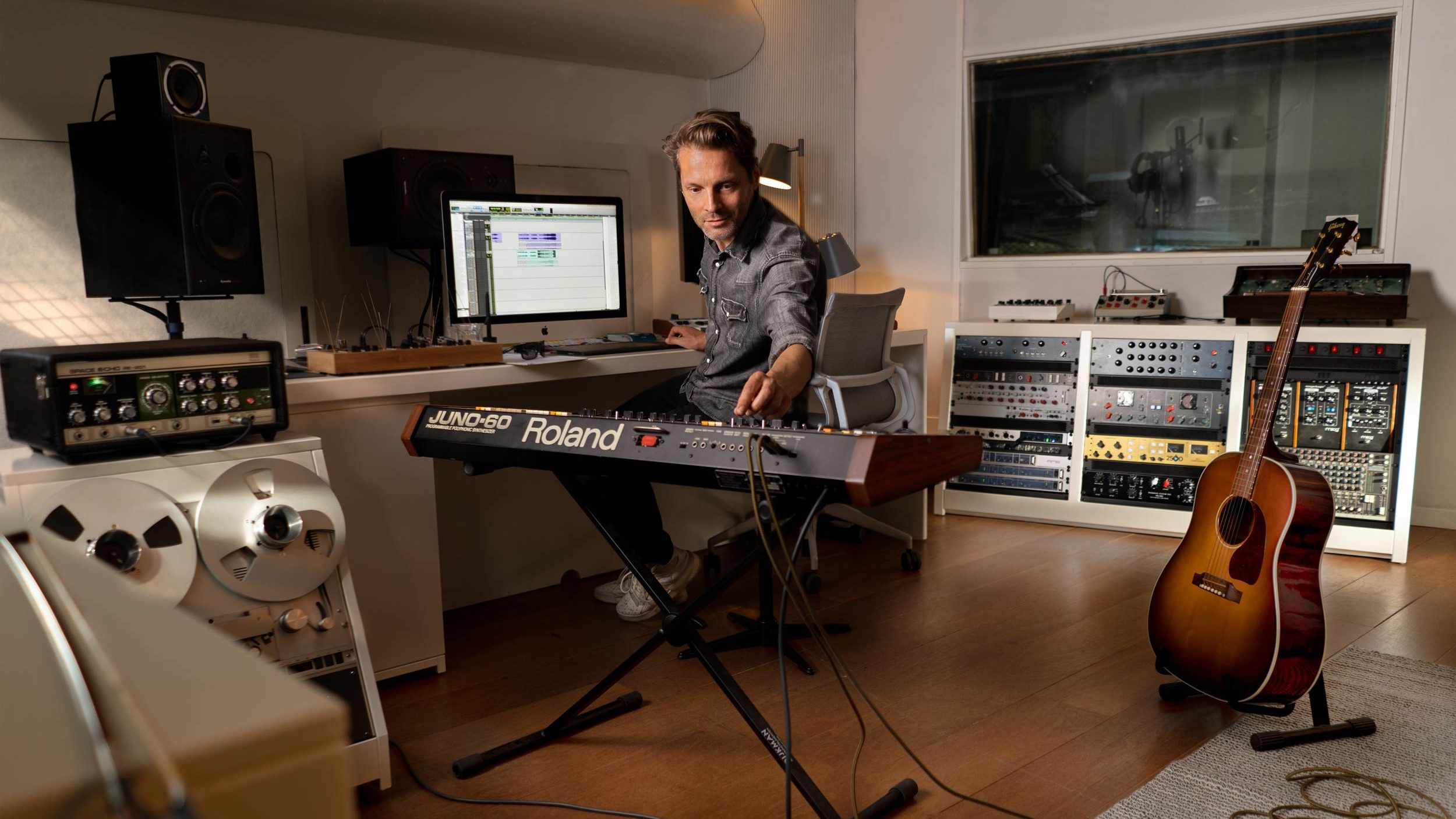 MERLIJN SNITKER. PHOTO BY ROGIER GERRITSEN
MERLIJN SNITKER. PHOTO BY ROGIER GERRITSEN
Furthermore, I also recently finished the Belgium feature ‘Save Sandra’. It’s based on a true and very moving story about two parents who fight the medical industry to save their daughter’s life who is diagnosed with MLD, a rare muscular disease. The three of them are having this David versus Goliath fight which brings a lot of grief and frustrations. The music for this story has two sides; on one hand, a very intimate side which reflects the love between them and on the other hand, an oppressive side, which stands for the frustrating parts of the story. I recorded the music with a small group of musicians, and for the biggest part, the music is quite subtle except for the scene where the David versus Goliath fight comes to a climax.
Initially, this movie was going to be released this upcoming September but because of the corona crisis, it is postponed to February 2021.
In the second half of this year I’m working on two other interesting but very different projects. The title of the first one is ‘To Unveil a Star’. It is an experimental combination of an art film and a documentary made by art photographer Juul Hondius, who always makes very political work. This one is a film essay on the 1971 sculpture, a star with two round circles near the entrance of the NATO headquarters in Brussels, and the message of the organisation behind this sculpture.
The other project is the feature ‘My Best Friend Anne Frank’, made by the Oscar-nominated director Ben Sombogaart. The story, based on the memoirs of Anne Frank’s friend Hannah Goslar, is told from her perspective. The best friends, shy Hannah and precocious Anne are separated in 1942 but meet again in 1945 in the concentration camp where Hannah risks her life trying to save Anne. This feature will be released on Netflix worldwide.
Regarding both films, I cannot say much about the music yet, because I have only just started. But both films have enormous musical challenges and I am really looking forward to working on these projects in the next upcoming months. It would be great if I could say at the end of the year that these two projects brought me new musical horizons.
Stella Lungu
Stella is the Editor-in-Chief of The Cinematic Journal. She is also the Managing Director of Wolkh, a PR, Marketing and Branding agency specializing in Film, TV, Interactive Entertainment and Performing Arts.
An Interview with Anna Drubich
Anna Drubich is a Russian-born composer of both concert and film music, and has studied across…
A Conversation with Adam Janota Bzowski
Adam Janota Bzowski is a London-based composer and sound designer who has been working in film and…
Interview: Rebekka Karijord on the Process of Scoring Songs of Earth
Songs of Earth is Margreth Olin’s critically acclaimed nature documentary which is both an intimate…
Don't miss out
Cinematic stories delivered straight to your inbox.
Ridiculously Effective PR & Marketing
Wolkh is a full-service creative agency specialising in PR, Marketing and Branding for Film, TV, Interactive Entertainment and Performing Arts.
